records
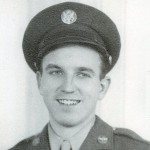
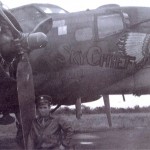 A number of years ago, I requested my dad, Staff Sergeant Allen Lewis Spencer’s military records from the National Personnel Records Center (NPRC) in Saint Louis, Missouri, only to be told that the records had been destroyed by a fire in 1973. I hadn’t heard about this before, and so really knew nothing about the details, except that I would never be able to find any more records of my dad’s military service during World War II, other than the ones we had, which was comparatively little. I wondered how it could be that the only military records for all those men were stored in one building, with no back up records. I know computers were not used as often, but there were things like microfiche back then. Nevertheless, the records were lost…and the loss felt devastating to me.
A number of years ago, I requested my dad, Staff Sergeant Allen Lewis Spencer’s military records from the National Personnel Records Center (NPRC) in Saint Louis, Missouri, only to be told that the records had been destroyed by a fire in 1973. I hadn’t heard about this before, and so really knew nothing about the details, except that I would never be able to find any more records of my dad’s military service during World War II, other than the ones we had, which was comparatively little. I wondered how it could be that the only military records for all those men were stored in one building, with no back up records. I know computers were not used as often, but there were things like microfiche back then. Nevertheless, the records were lost…and the loss felt devastating to me.
When I heard about the fire that destroyed my dad’s records, it all seemed like the distant past, but in reality, it was during my high school years. Then, it just seemed like a bad dream…a nightmare really. I couldn’t believe that there was no way to get copies of those records. My dad’s pictures, one of which was signed by the pilot of Dad’s B-17, on which Dad was a top turret gunner. Those pictures and the few records are all we have of his war years, and to this day, that makes me sad.
The fire broke out on July 13, 1973 and quickly engulfed the top floor of the National Personnel Records Center (NPRC). In less 15 minutes from the time the fire was reported, the first firefighters arrived at the sixth floor of the building, only to be forced to retreat as their masks began to melt on their faces. The fire was that hot!! There was just no way to successfully save the documents that were stored there. The fire burned out of control for more than 22 hours…even with 42 fire districts attempting to extinguish the flames. It was not until five days later that it was finally completely out. Besides the burning of records, the tremendous heat of the fire warped shelves while water damage caused some surviving documents to carry mold.

About 73% to 80% of the approximately 22 million individual Official Military Personnel Files stored in the building were destroyed. The records lost were those of former members of the U.S. Army, the Army Air Force, and the Air Force who served between 1912 and 1963. My dad joined the Army Air Force on March 19, 1943 and was discharged October 3, 1945. Many of the documents lost were from those years. They were gone, and there was no way to get them back. The National Personnel Records Center staff continues to work to preserve the damaged records that ere saved. There were about 6.5 million records recovered since the fire.
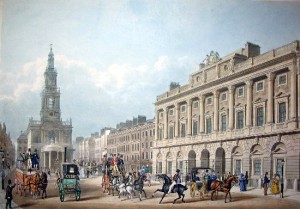 Anyone who has ever tried to trace their family history knows just how difficult it can be to find the records sometimes. Early families kept their records mostly in the family Bible, or some other type of record keeping book, and if the records weren’t kept where they were safe, or where the next generation knew to look for them, they were often lost. It seems that some nations were more ahead of the pack when it came to registering the people…where it was for a good purpose or not. Later it was only churches that kept records of these things.
Anyone who has ever tried to trace their family history knows just how difficult it can be to find the records sometimes. Early families kept their records mostly in the family Bible, or some other type of record keeping book, and if the records weren’t kept where they were safe, or where the next generation knew to look for them, they were often lost. It seems that some nations were more ahead of the pack when it came to registering the people…where it was for a good purpose or not. Later it was only churches that kept records of these things.
The Bible tells us in Luke 2:1-5, “And it came to pass in those days that a decree went out from Caesar Augustus that all the world should be registered. This census first took place while Quirinius was governing Syria. So all went to be registered, everyone to his own city. Joseph also went up from Galilee, out of the city of Nazareth, into Judea, to the city of David, which is called Bethlehem, because he was of the house and lineage of David, to be registered with Mary, his betrothed wife, who was with child.” In many way, I suppose it was from this point on that the Romans and Jews began to keep such clear records, although, according to the Bible and the lineage of Jesus told there, the Jews had kept very clear records before that. It was clear record keeping of this type that made it possible for families to know their heritage.
As I have searched for my own ancestors, I have found that in more modern times, such as the 1000 to 1700s, the record keeping was not so good. I don’t know if people were just more lax about it, or if there seemed to be no good place to store these things. I could also be that in cases where good records were kept, fire, flood, or some other natural disaster destroyed them later on. I find that to be such a sad state of affairs, because it can put up a wall between the genealogical researcher and the valuable information they are searching for.
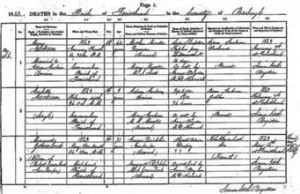
I guess I’m not the only person to ever feel that way, because on this day, July 1, 1837, England and Wales established the Civil Registration system to record births, marriages, and deaths. It is that same system that is used in Ancestry.com to provide valuable records used by genealogical researchers to this day. Of course, in the early days, the records were stored in volume after volume in some dusty corner of a courthouse or something. It was very hard to research family through that avenue, but with the invention of the internet, and the transfer of those records to it, the civil registration of births, marriages, and deaths has opened up many new doors in genealogical research.
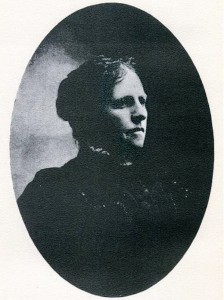 When Hattie Goodman, who is my husband, Bob’s 3rd cousin 4 times removed, wrote her family history book about the Knox family, back in 1905, computers and the internet were far in the future. The Knox family knew that their roots were is Scotland, but during her lifetime, the connection was never made. Having searched, fruitlessly at times, for my own roots, I can relate to the frustration she must have felt at hitting that brick wall. I can’t imagine how slow the process must have been when the only ways to search the records were by mail or a personal visit to the city whose records you were researching…or word of mouth, which can be highly unreliable. Her own search ended with her passing, but since that time, much has changed in the genealogy realm.
When Hattie Goodman, who is my husband, Bob’s 3rd cousin 4 times removed, wrote her family history book about the Knox family, back in 1905, computers and the internet were far in the future. The Knox family knew that their roots were is Scotland, but during her lifetime, the connection was never made. Having searched, fruitlessly at times, for my own roots, I can relate to the frustration she must have felt at hitting that brick wall. I can’t imagine how slow the process must have been when the only ways to search the records were by mail or a personal visit to the city whose records you were researching…or word of mouth, which can be highly unreliable. Her own search ended with her passing, but since that time, much has changed in the genealogy realm.
While she was unable to link the Knox family to Scotland, that link has since been made. According to John Knox, of the Knox-Laffoon clan, “John Knox, emigrant progenitor, represented by the trunk of our Knox Family Tree, was a native of Scotland, born about the year 1708. The exact locality of his birthplace is not certainly known. Some of the descendants on two different branches have it by tradition that Renfrewshire was his native place. He went from Scotland to Ireland, with other Scotch emigrants, by invitation of the King of England, to constitute a balance of power against the insurgent Irish Catholics. He married an Irish Presbyterian wife, Miss Jean Gracy, whose mother’s name was Jean Sinclair. They emigrated to America (from Coleraine, Ireland) about 1740, in company with his brother-in-law, Patrick Gracy, and others. It is thought that he first settled in Pennsylvania before coming South to Carolina. He was one of the early settlers of Rowan county, N. C. He bought six hundred acres of land on the south side of Third Creek for £37, 10s., which land had been granted by Earl Granville to James Stuart.”
At some point, my father-in-law, Walter Schulenberg, who had married my mother-in-law, Joann Knox, was given a CD containing much of the history of the Knox family, in the form of Hattie Goodman’s book and many family pictures. I downloaded that to my computer, and have since very much enjoyed reading her writings, and especially enjoyed all the pictures that were included. I have used several of them in previous writings about the Knox family. What a wonderful thing for someone to have transferred all that information to a CD, where it could be shared and enjoyed by so many people. Originally, Reverend James Knox drew a sketch of his family tree, as far back as he knew. During Hattie’s lifetime, she was able to add many people to the original tree, and in the end produced a wonderful heirloom tree with about 2,200 names on it. Many copies were made and given to various family members. I was privileged enough to be able to see one of those copies when Bob and I visited 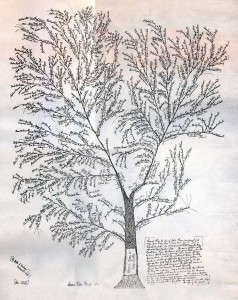 his great grandparents, Edgar and Nellie Knox in September of 1976. It was a magnificent tree, and while I can provide a copy here, it could never be as impressive as the extra large one I got to see.
his great grandparents, Edgar and Nellie Knox in September of 1976. It was a magnificent tree, and while I can provide a copy here, it could never be as impressive as the extra large one I got to see.
I suppose that many people might think that today’s ability to research family histories is almost cheating, but I think it is better to be able to find the answers…even if it’s taking the easy way, than never to find the answers at all. These days, the research has gone far beyond pouring over records stored in some dark basement room at city hall. Besides the internet, and the vast amount of records that are shared there every day, there are also DNA connections. I have had my DNA analyzed, and have connected with many family members from that one test. It is amazing how far we have come, and I think that in the future, we may find ourselves even closer to being able to connect to our roots, be they Scottish or one of the many other nationalities.

